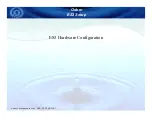
SOME TIPS ON WATER CHEMISTRY
How to adjust pH
A pH range of 7.2 – 7.8 is ideal for maximum comfort and maximum chlorine effectiveness.
Always adjust total alkalinity before adjusting pH.
Low pH (acidic water) leads to stinging eyes and corrosion of open metal fittings. Raise the pH
by adding sodium bicarbonate or soda ash. Consult your pool professional regarding which
chemical is best for your situation and the proper amount to use. Check the pH after 4 hours of
circulation, adjusting as necessary to achieve the proper range.
High pH (alkaline water) leads to clouding of the water and reduces the amount of active chlorine.
This means algae and germs can grow. Lower the pH by adding muriatic acid to the pool water.
The acid demand indicated by your 4-in-1 test kit will show the amount of acid to use.
WARNING: ALWAYS ADD ACID TO WATER, NEVER WATER TO ACID.
If your pH remains inconsistent, check your total alkalinity.
Total alkalinity affects pH
Total alkalinity is a measure of the alkaline chemicals in your pool water (e.g. Bicarbonates,
carbonates, and hydroxides). It can be thought of as the buffering system necessary to control
pH. Low alkalinity can be compared to weak shock absorbers on a car, allowing pH to fluctuate.
The pH will be difficult to maintain and staining of pool surfaces may occur when total alkalinity is
too low.
Total alkalinity should be in the range of 100-120 ppm. Total alkalinity is often confused with pH.
They are related, however distinct. To raise total alkalinity, add pH buffer (sodium bicarbonate) at
the rate shown in the manufacturer’s instructions to achieve a reading in the 100 – 120 ppm
range. 180 g of sodium bicarbonate raises 10,000 litres of pool water by 10 ppm.
To lower the total alkalinity, use muriatic acid. The acid demand chart in your 4-in-1 test kit will
indicate the necessary amount to add. Adjust as needed until the reading (taken at least 24
hours later) is in the 100-120 ppm range. When total alkalinity is correct, you may need to adjust
pH.
WARNING: ALWAYS ADD ACID TO WATER, NEVER WATER TO ACID.
Use of algaecides and phosphate removers
Although not normally needed, algaecides and phosphate removers may be used in conjunction
with the Zodiac EZ SALT Chlorine Generating Device. Consult your pool professional regarding
the presence of phosphates in your local area and always follow manufacturer’s instructions for
treatment.
The chlorine residual level automatically produced by the Zodiac EZ SALT Chlorine Generating
Device is the best defence against algae and is usually all that is necessary. If algae is observed
however, brush spot thoroughly, adjust pH, super chlorinate with the EZ SALT Chlorine
Generating Device ‘boost’ button or manually shock pool water with liquid chlorine (sodium
hypochlorite). A chlorine residual should be measurable within 24 hours. If not, repeat shock
treatment. After shocking, check to ensure that the EZ SALT Chlorine Generating Device is
maintaining a residual chlorine level to prevent future algae growth. With extreme algae
conditions, manually shocking the pool is the best option.
Note:
Overuse of algaecides can lead to a reduction in chlorine residual because algaecides can
negatively react with the chlorine. When using algaecides, always follow manufacturer’s
24












































